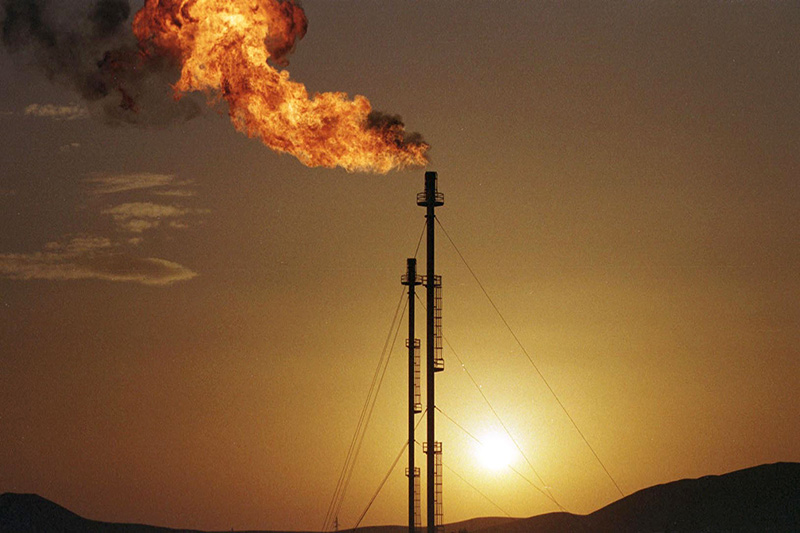Investing.com - Natural gas futures came under pressure during U.S. morning trade on Tuesday, as forecasts calling for warmer-than-normal autumn temperatures weighed on future demand expectations for the heating fuel.
Traders also looked ahead to Thursday’s closely watched U.S. government report on natural gas supplies.
On the New York Mercantile Exchange, natural gas futures for delivery in November traded at USD3.349 per million British thermal units during U.S. morning trade, dropping 1.6%.
It earlier fell by as much as 1.65% to trade at a session low of USD3.348 per million British thermal units.
Updated weather forecasts released Monday showed warmer-than-normal temperatures were expected across much of the U.S. Midwest and East Coast over the next two weeks, dampening early-Autumn heating demand for natural gas.
According to the Commodity Weather Group, spikes of "much-above-normal temperatures" in the Midwest are expected in the next six-to-10 days, while the East Coast will see similar weather patterns in the next 11-to-15 days.
Natural gas futures often reach a seasonal low in October, when mild weather reduces demand, before recovering in the winter, when heating-fuel use peaks.
Ongoing concerns over bloated U.S. inventory levels also added to the selling pressure. Total U.S. gas supplies stood at 3.653 trillion cubic feet, 8.3% above the five-year average level for the week.
Early injection estimates for this week’s storage data range from 76 billion cubic feet to 98 billion cubic feet, compared to last year's build of 108 billion cubic feet. The five-year average change for the week is an increase of 84 billion cubic feet.
Inventory did not top the 3.4-trillion cubic feet level in 2011 until October 5, with stocks peaking at a record 3.852 trillion cubic feet in November of last year.
Market analysts have warned that without strong demand through the early-Autumn shoulder season, gas inventories will reach the limits of available capacity later this year.
The shoulder season is the period in autumn when gas demand typically slackens and prices fall.
Elsewhere on the NYMEX, light sweet crude oil futures for delivery in November rallied 2.2% to trade at USD91.29 a barrel, while heating oil for November delivery rose 1.05% to trade at USD3.177 per gallon.
Traders also looked ahead to Thursday’s closely watched U.S. government report on natural gas supplies.
On the New York Mercantile Exchange, natural gas futures for delivery in November traded at USD3.349 per million British thermal units during U.S. morning trade, dropping 1.6%.
It earlier fell by as much as 1.65% to trade at a session low of USD3.348 per million British thermal units.
Updated weather forecasts released Monday showed warmer-than-normal temperatures were expected across much of the U.S. Midwest and East Coast over the next two weeks, dampening early-Autumn heating demand for natural gas.
According to the Commodity Weather Group, spikes of "much-above-normal temperatures" in the Midwest are expected in the next six-to-10 days, while the East Coast will see similar weather patterns in the next 11-to-15 days.
Natural gas futures often reach a seasonal low in October, when mild weather reduces demand, before recovering in the winter, when heating-fuel use peaks.
Ongoing concerns over bloated U.S. inventory levels also added to the selling pressure. Total U.S. gas supplies stood at 3.653 trillion cubic feet, 8.3% above the five-year average level for the week.
Early injection estimates for this week’s storage data range from 76 billion cubic feet to 98 billion cubic feet, compared to last year's build of 108 billion cubic feet. The five-year average change for the week is an increase of 84 billion cubic feet.
Inventory did not top the 3.4-trillion cubic feet level in 2011 until October 5, with stocks peaking at a record 3.852 trillion cubic feet in November of last year.
Market analysts have warned that without strong demand through the early-Autumn shoulder season, gas inventories will reach the limits of available capacity later this year.
The shoulder season is the period in autumn when gas demand typically slackens and prices fall.
Elsewhere on the NYMEX, light sweet crude oil futures for delivery in November rallied 2.2% to trade at USD91.29 a barrel, while heating oil for November delivery rose 1.05% to trade at USD3.177 per gallon.
